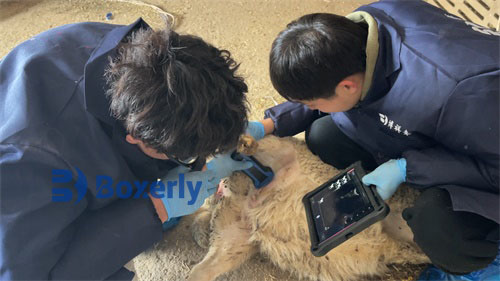Animal B-ultrasound imaging has its own characteristics. Ultrasonic waves are non ionizing radiation and have no harm to animals within the power range used for diagnosis. They can be used repeatedly and frequently. Ultrasound has a high discriminative power for soft tissues and has advantages in the diagnosis of soft tissue diseases. Ultrasound imaging instruments are easy to use and inexpensive.
There are currently three main types of ultrasound scanning imaging methods commonly used: A-type, B-type, and M-type. The basis for diagnosis using the B-type real-time imaging device for animals is the characteristics of tomographic images, mainly including image morphology, grayscale, internal structure, boundary echo, overall echo, posterior organ condition, and surrounding tissue presentation.
To study the mechanism of interaction between Veterinary ultrasound and biological tissues, in order to identify the manifestations and effects of various factors in echoes, and establish a method for feature extraction. The biological tissue parameters related to diagnosis that are now recognized by people include acoustic impedance, sound velocity, medium density, acoustic attenuation coefficient, scattering coefficient, scattering sub scale and density distribution, nonlinear parameters, backscattering integral, elastic coefficient, and so on. The quantitative extraction methods of these parameters are cutting-edge topics in ultrasound tissue characterization.
With the emergence of fully digital ultrasound imaging devices, the demand for quantitative estimation of characteristic parameters in echoes will become more urgent. Future ultrasound diagnostic devices can simultaneously provide multiple feature quantities of images for doctors to refer to, making full use of the information carried in ultrasound echoes








